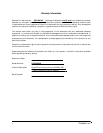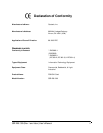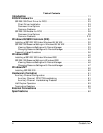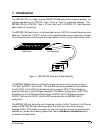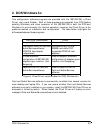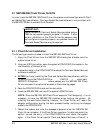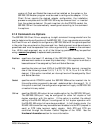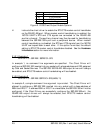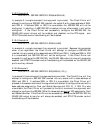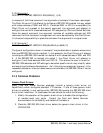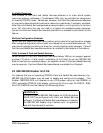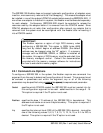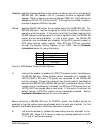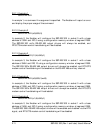
version of Card and Socket Services must be installed on the system or the
SSP-200/300 Enabler program must be used to configure the adapter. If the
Client Driver reports the desired adapter configuration, the installation
process is complete and the SSP-200/300 may be removed and/ or inserted
from the system as desired. On each insertion into the PCMCIA socket, the
SSP-200/300 will be automatically reconfigured according to the command
line options.
2.1.2 Command Line Options
The SSP-200/300 Client Driver accepts up to eight command line arguments from the
user to determine the configuration of theSSP-200/300. If any arguments are provided,
the Client Driver will attempt to configure any SSP-200/300s with the options specified
in the order they are entered on the command line. Each argument must be enclosed in
parenthesis and must be separated from other arguments by a space on the command
line. Within each argument, any or all of the following parameters may be specified
using a comma (no spaces) to separate each parameter:
Baddress specifies a the base I/O address of the SSP-200/300in hexadecimal. This
address must reside on an even 8-byte boundary. If this option is omitted, a
base address will be assigned by Card and Socket Services.
Iirq specifies the interrupt level (IRQ) of the SSP-200/300in decimal. irq must be
one of the following values: 3, 4, 5, 7, 9, 10, 11, 12, 14, 15, or 0 if no IRQ is
desired. If this option is omitted, an interrupt level will be assigned by Card
and Socket Services.
Ssocket specifies which PCMCIA socket the SSP-200/300must be inserted into for
this configuration argument to be used. socket must be in the range 0 - 15. If
this option is omitted, the configuration argument will apply to SSP-200/300
s inserted into any socket.
Odriver specifies RS-422/485 output driver enable option for the SSP-200/300 port.
The SSP-200/300’s port may be configured for either full duplex or half
duplex operation with this option. If this option is omitted, the default
setting is the RS-422/485 port is configured for full duplex operation with
the RS-422/485 output drivers always enabled. In half duplex mode, the
RS-422/485 transmitter may be enabled and disabled via the RTS (request to
send) or DTR (data terminal ready) signals. Both RTS and DTR are
controlled through the Modem Control Register of the 16750. See the
Hardware Information section for more information.
DOS/Windows 3.x 2-4




